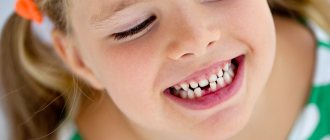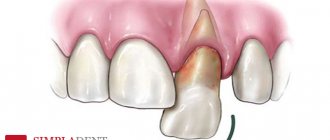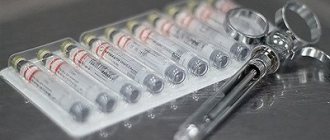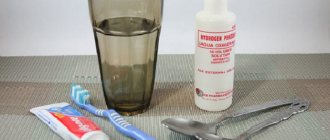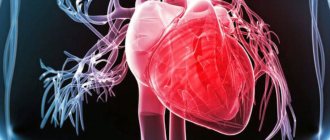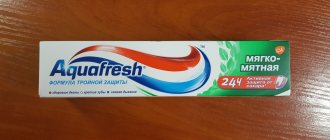Author of the article:
Soldatova Lyudmila Nikolaevna
Candidate of Medical Sciences, Professor of the Department of Clinical Dentistry of the St. Petersburg Medical and Social Institute, Chief Physician of the Alfa-Dent Dental Clinic, St. Petersburg
Modern dentistry has come a long way, and today treating even the most complex cases of caries often does not pose a big problem for doctors. However, despite advances in knowledge and equipment, caries and its treatment are still associated with significant discomfort and the risk of developing dangerous complications. That is why the most effective means of combating this disease remains the prevention of caries.
To do this, you should choose high-quality cleaning products. Asepta offers a line of toothpastes that meet all the requirements for impeccable hygiene. They contain a sufficient amount of minerals that compensate for their deficiency in the enamel; a natural enzyme that effectively breaks down plaque; gentle abrasives that gently whiten teeth.
How to prevent caries and can it be stopped? Unfortunately, the answer may be different in each individual case. The development of caries is closely related not only to personal hygiene, but also to the genetically determined characteristics of the body. However, we can say with confidence that modern methods of caries prevention are quite effective and in many cases make it possible not only to prevent the development or stop the developing carious process, but also to restore the affected tissue.
Primary prevention of dental caries
All methods of preventive control of caries can be divided into primary, secondary and tertiary. Primary ones are aimed at preventing the development of the pathological process. They, in turn, can be divided into endogenous and exogenous.
How to protect teeth from caries, affecting the entire body? Endogenous caries prevention is aimed at achieving this goal. It includes simple but extremely effective methods:
- Balanced healthy diet
- Additional intake of vitamins and other nutrients
- Immune stimulation
Since one of the main causes of caries is the activity of pathogenic microorganisms, the state of local and general immunity plays an extremely important role in its development. For this purpose, immunomodulatory drugs can be used, as well as procedures that have a general strengthening effect on the body. No less effective is creating a healthy diet that excludes foods that have a particularly strong destructive effect on enamel.
These include almost all sweets, carbonated drinks and concentrated juices, fruits (especially sour ones). The general rule is to reduce the amount of carbohydrates and acids, maintaining a balanced diet containing proteins, carbohydrates and fats in optimal proportions.
On the other hand, many products can provide the body with invaluable assistance in the fight against caries. For example, lime is a rich source of calcium and fluoride, green tea prevents the formation of soft plaque, which is a breeding ground for bacteria, and carrots and other hard raw vegetables clean the surface of the teeth well and promote the uniform development of the dental system. It is also necessary to avoid frequent snacking between meals - this will reduce the period during which acids and sugars attack tooth enamel.
Demineralization of teeth is often a consequence of a lack of vitamins, microelements and other nutrients. Their lack causes changes in the structure of enamel and dentin, slows down regeneration processes and prevents the action of compensatory mechanisms. Simply put, the hard outer shells begin to do a worse job of protecting teeth from caries. The most important vitamins for dental health are vitamins A, C and D, as well as fluoride and calcium.
Exogenous methods are those methods that are aimed directly at the teeth and other organs and tissues of the oral cavity. Local and secondary caries prevention (treatment) usually fall into this category.
Exogenous prevention of caries includes the use of the following methods:
- Careful adherence to oral hygiene rules
- Carrying out remineralization
- Professional hygiene
- Fissure sealing
- Bite correction
Let's look at each method in more detail.
Features of caries in elderly patients: how to slow it down
Elderly people are considered to be over 60 years of age. Caries in the elderly develops under the influence of the same cariogenic factors as in younger people, but there are some peculiarities.
A study conducted in a Swiss clinic showed that in patients aged 50-94 years, a quarter of the remaining teeth were affected by caries.
One of the characteristic features of caries in the elderly is its localization in the neck of the tooth. Often in older people, carious lesions do not spread deep into, but along the surface of the tooth enamel. Many people wear dentures, and the teeth in contact with them are often affected by caries. A large percentage of defects are recurrent and chronic caries.
As you age, the risk of tooth root caries increases, which some doctors call the main problem in treating the teeth of older people.
Effective measures to prevent caries in the elderly are:
- professional oral hygiene twice a year;
- brushing your teeth twice a day using a toothbrush, toothpaste and floss;
- use of saliva thinners;
- deep fluoridation of dental tissues.
This set of preventive measures helps reduce the risk of developing caries in the elderly by more than half.
Oral hygiene
Regular hygiene procedures are one of the simplest and at the same time effective methods of preventing dental caries. After each meal, doctors strongly recommend rinsing your mouth, and best of all, brushing your teeth. This must be done within the first five minutes after eating, because it is at this time that they are most intensely affected by aggressive factors.
Hygiene procedures must necessarily include the use of dental floss or toothpicks. The floss allows you to effectively clean the interdental space from food debris, which serves as a breeding ground for pathogenic microflora. In most cases, removing such residues with an ordinary brush is not possible, so the use of thread or floss is absolutely necessary. As an additional remedy, you can use rinses - they have anti-inflammatory and antiseptic effects, help maintain a normal acid-base balance in the mouth and freshen breath.
The choice of hygiene products is also extremely important. An extremely effective remedy is the regular use of toothpastes containing fluoride. Fluoride exposure not only helps strengthen tooth enamel, but also has an inhibitory effect on pathogens and helps remove soft plaque. By integrating into the structure of the enamel, fluoride retains calcium in it and increases the resistance of teeth to various destructive factors.
However, fluoride-containing pastes can only be used in those regions where it is contained in water in an amount of no more than 1.2 mg per 1 liter. Otherwise, fluorosis may develop, a disease that occurs due to an excess of fluoride. If it is impossible to use fluoride prophylaxis, it is necessary to give preference to fluoride-free anti-caries pastes containing antibacterial components and a large amount of calcium.
Primary prevention of tooth decay may also include having your teeth professionally cleaned. In a dental office, a doctor can remove even the most persistent deposits, which are one of the important factors in the mechanism of caries formation. For this purpose, a wide range of means is used - from special medications to high-tech ultrasound equipment.
Types of prevention
Prevention of dental diseases is one of the branches of dentistry. There are two categories of preventive measures:
- endogenous - allow you to improve the condition of the body, saturate dental tissues with useful substances using food or drugs (medicinal and non-medicinal);
- exogenous - are hygienic, medical procedures performed in the oral cavity.
Prevention measures are standard, but there are some nuances that are taken into account when selecting preventive measures for children and adults.
Prevention of caries with remineralizing agents
The leaching of mineral components from the hard shells of teeth leads to their loosening and weakening - as a result, the tooth’s ability to resist the effects of destructive factors is reduced. In order to solve this problem, special remineralizing agents have been developed for the prevention of caries, which allow the chemical composition of teeth to be restored. The main components of these products are calcium and fluoride.
Today, the following means are used for remineralization:
- Varnishes with a high fluoride content for treating teeth
They are applied using a special brush in a dental office. Varnishes form a protective film on the outer surface of the tooth. The procedure must be carried out two to four times a year to achieve a sustainable effect. You should refrain from eating for two hours after applying the varnish. - Professional medicinal pastes
Suitable for home use. Application - daily or several times a week. It is not recommended to use medicated pastes (especially fluoride-containing ones) in children under 3 years of age. - Gels and other astringent external products for applications
can be used as independent products, as well as as auxiliaries during electrophoresis. They are applied and fixed to the surface using special spoons or trays. The procedure is repeated several times a year. - Fluoride-containing solutions and mouth rinses
can also be used independently. - Fluoride Discs
Using a handpiece, a rotating disc containing a high mineral content is literally rubbed into the surface of the tooth, allowing extremely deep penetration of the active ingredients.
Why does caries appear?
A variety of microbes and bacteria live in human saliva, some of them are useful, others not so much: the concentration of certain microorganisms in the mouth plays a decisive role in the development of caries.
Under the influence of acids secreted by streptococci (bacteria), which feed on sugars from the remains of sweet foods or drinks on the surface of the teeth, and the more nutritious this environment, the larger the colony of these microorganisms. If there are more carious bacteria, normal neutral saliva becomes acidified, and minerals are washed out of the hard tissues of the teeth.
The enamel becomes easily permeable to streptococci, which multiply faster in an acidic environment and penetrate the tooth tissue. In addition, bacteria build a “fortress wall” - a protective film, which becomes more difficult to remove from teeth the longer they are exposed to these uninvited guests.
Fissure sealing
One of the latest words in the prevention of caries in adults and children is a procedure called “fissure sealing.” Fissures are natural depressions located on the chewing surface of the teeth (especially noticeable on molars). At the bottom of such depressions there is soft enamel with a low degree of mineralization; In addition, food debris and bacterial mass often accumulate in the fissures. As a result, it is the weak enamel of these depressions that often becomes the entry point for infection, leading to damage or loss of the tooth.
Fissures can be either closed or open (you can touch the bottom of the recess with the instrument). In order to protect them from caries, a sealing procedure is carried out. To do this, the recesses are treated with a special solution and then filled with dental sealant consisting of materials resistant to acids and alkalis. “Sealing” fissures is an extremely effective measure for the prevention of childhood caries and caries in adolescents. However, the procedure can be performed on patients up to 55 years of age. The sealing effect lasts for 4-5 years. After this period is completed, the procedure can be repeated without damaging the health of the teeth. Contraindications to the procedure are the presence of fissure caries and poor oral hygiene.
What factors can influence the development of caries?
Individual tooth structure : location of fissures and grooves on the surface. The most “dangerous” are flask-shaped fissures; it is almost impossible to clean plaque from the bottom yourself. We can recommend hermetic sealing of fissures.
Malocclusion: Dental hygiene is complicated by the position of the teeth, so plaque will provoke the development of caries (and other possible problems). A visit to the orthodontist will allow you to choose an individual bite treatment plan.
Eruption of wisdom teeth (eighth teeth): Since “eighth teeth” grow in at the age of 23-26 years, when the jaw is already formed, displacement of the remaining teeth may occur. And since they are often inaccessible for daily cleaning, carious bacteria accumulate on them.
Various general diseases : stomach diseases, diabetes, cardiovascular problems, etc.
Hereditary predisposition to carious lesions: for example, low mineral content in saliva, low level of the immune system.
Pregnancy and breastfeeding period.
How to stop tooth decay: correcting your bite
According to many, malocclusion is a minor cosmetic defect that does not have a major impact on dental health. In some cases this may be true; However, malocclusion can also cause uneven distribution of stress on the teeth during chewing, which, in turn, leads to premature wear. Without time to recover from mechanical stress, the enamel becomes much more susceptible to the effects of other destructive factors, which ultimately can lead to the onset of the carious process.
That is why bite correction should also be included in the list of preventive procedures. To correct it today, a wide range of technologies and methods are used - from installing braces to surgical intervention.
Clinical researches
ASEPTA toothpastes are clinically proven effective. For example, clinical studies have proven that regular use of professional toothpaste ASEPTA REMINERALIZATION improved the condition of the enamel by 64% and reduced tooth sensitivity by 66% after just 4 weeks.
In addition, clinical studies have proven that regular use of preventive toothpaste ASEPTA ACTIVE for a month can reduce bleeding gums by 60%, improve the overall condition of the oral cavity by 44% and reduce inflammation by 33%.
Sources:
- Report on determining/confirming the preventive properties of toothpaste “ASEPTA PLUS” GENTLE WHITENING” Author: doctor-researcher A.A. Leontyev, head Department of Preventive Dentistry, Doctor of Medical Sciences, Professor S.B. Ulitovsky First St. Petersburg State Medical University named after. acad. I.P. Pavlova, Department of Preventive Dentistry
- Clinical and laboratory assessment of the influence of domestic therapeutic and prophylactic toothpaste based on plant extracts on the condition of the oral cavity in patients with simple marginal gingivitis. Doctor of Medical Sciences, Professor Elovikova T.M.1, Candidate of Chemical Sciences, Associate Professor Ermishina E.Yu. 2, Doctor of Technical Sciences Associate Professor Belokonova N.A. 2 Department of Therapeutic Dentistry USMU1, Department of General Chemistry USMU2
- Report on the determination/confirmation of the preventive properties of personal oral hygiene products “ASEPTA PLUS” Remineralization doctor-researcher A.A. Leontyev, head Department of Preventive Dentistry, Doctor of Medical Sciences, Professor S.B. Ulitovsky First St. Petersburg State Medical University named after. acad. I.P. Pavlova, Department of Preventive Dentistry
- Clinical studies of antisensitive toothpaste “Asepta Sensitive” (A.A. Leontyev, O.V. Kalinina, S.B. Ulitovsky) A.A. LEONTIEV, dentist O.V. KALININA, dentist S.B. ULITOVSKY, Doctor of Medical Sciences, Prof. Department of Therapeutic Dentistry, St. Petersburg State Medical University named after. acad. I.P. Pavlova
- The role of anti-inflammatory rinse in the treatment of periodontal diseases (L.Yu. Orekhova, A.A. Leontyev, S.B. Ulitovsky) L.Yu. OREKHOVA, Doctor of Medical Sciences, Prof., Head of Department; A.A. LEONTIEV, dentist; S.B. ULITOVSKY, Doctor of Medical Sciences, Prof. Department of Therapeutic Dentistry of St. Petersburg State Medical University named after. acad. I. P. Pavlova
- Report on determining/confirming the preventive properties of toothpaste “ASEPTA PLUS” COFFEE and TOBACCO Author: doctor-researcher A.A. Leontyev, head Department of Preventive Dentistry, Doctor of Medical Sciences, Professor S.B. Ulitovsky. First St. Petersburg State Medical University named after. acad. I.P. Pavlova, Department of Preventive Dentistry
- Report on determining/confirming the preventive properties of commercially produced personal oral hygiene products: Asepta toothpaste used in combination with Asepta mouthwash and Asepta gum balm Head. Department of PFS Doctor of Medical Sciences Professor S.B. Ulitovsky St. Petersburg State Medical University named after Academician I.P. Pavlova. Faculty of Dentistry. Department of Preventive Dentistry.
